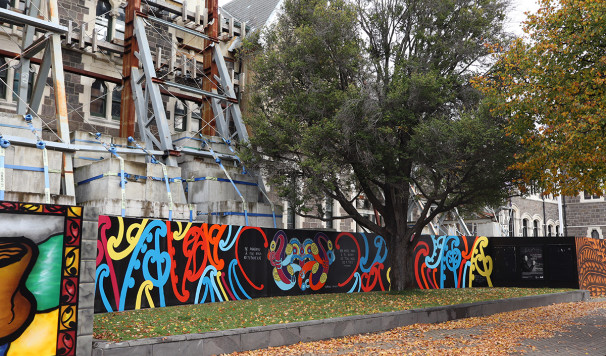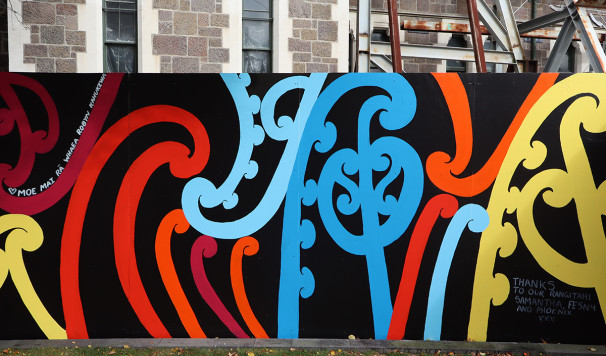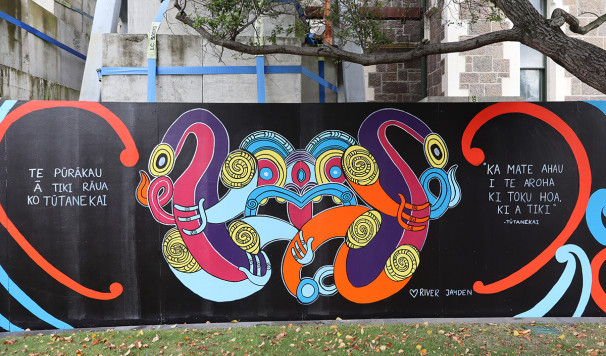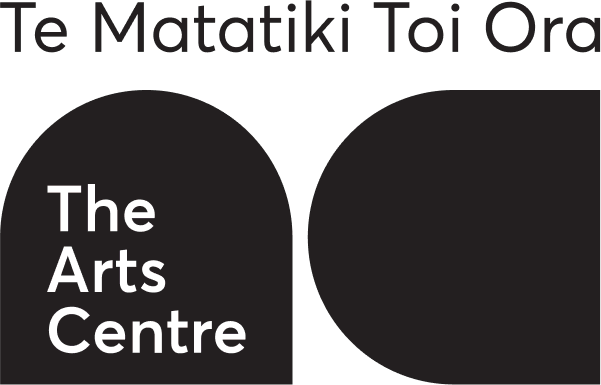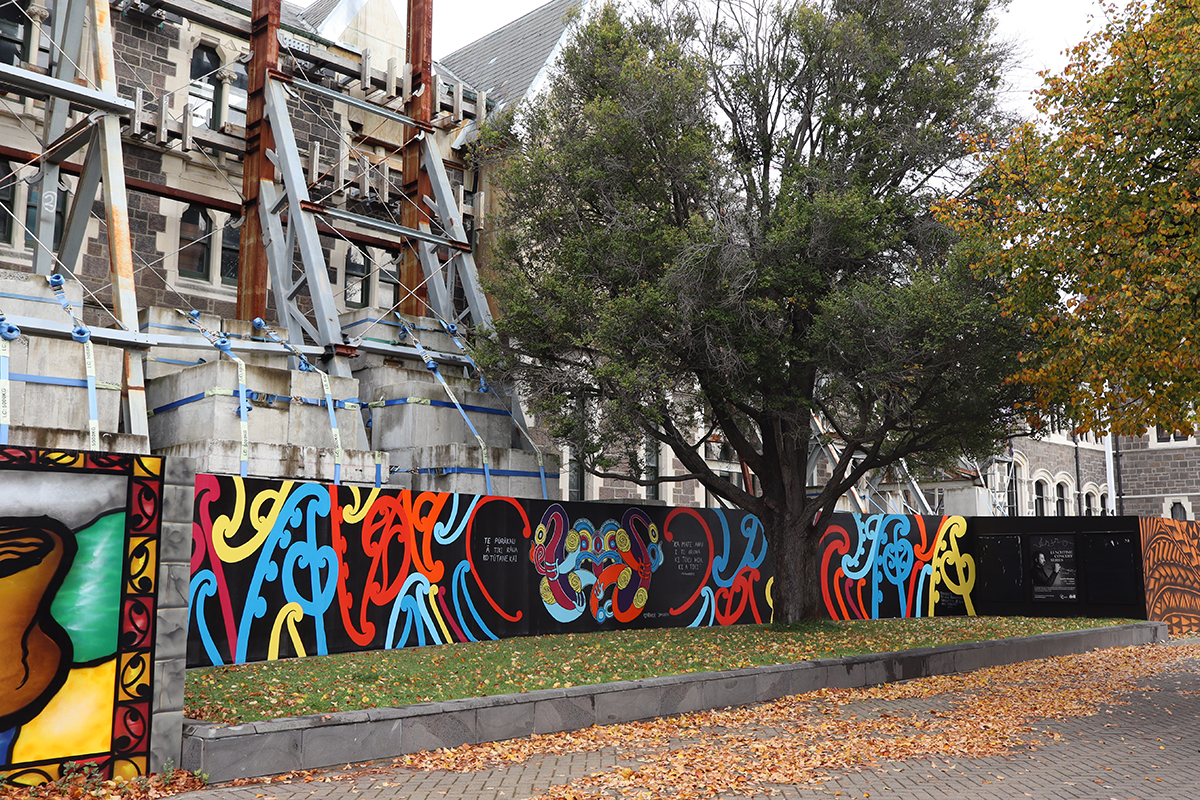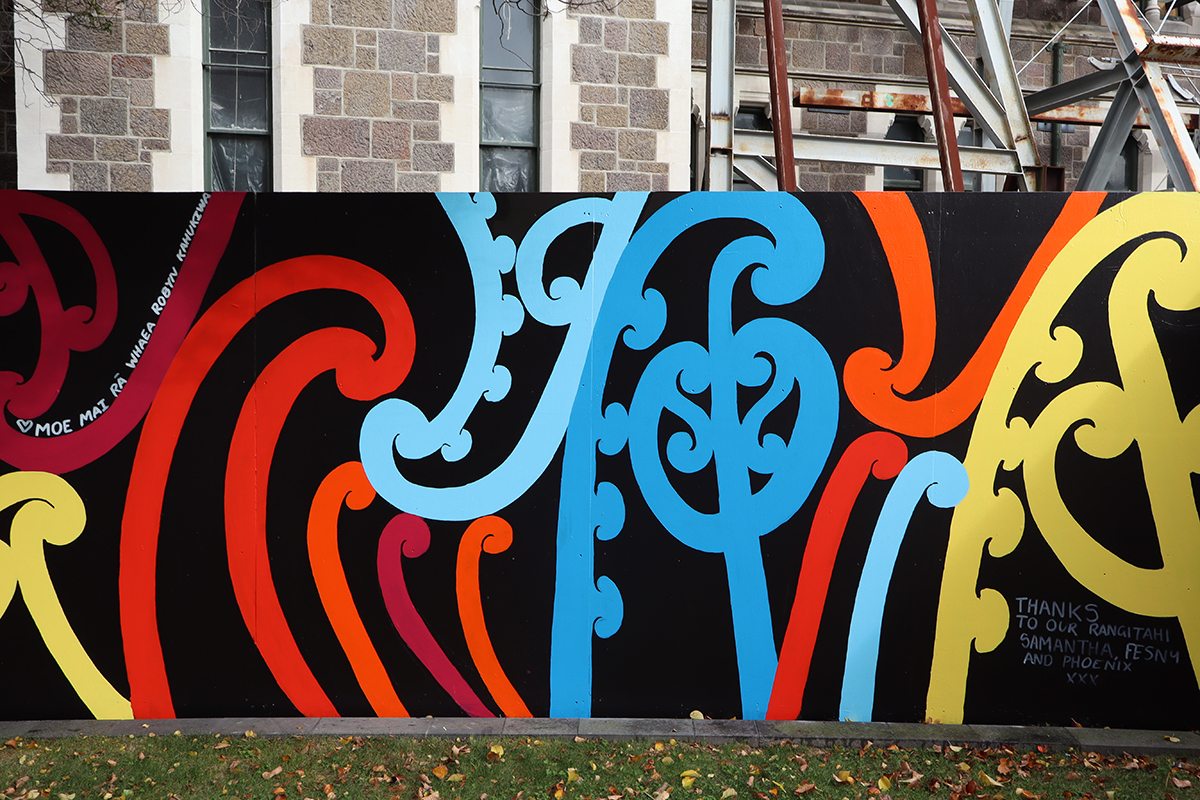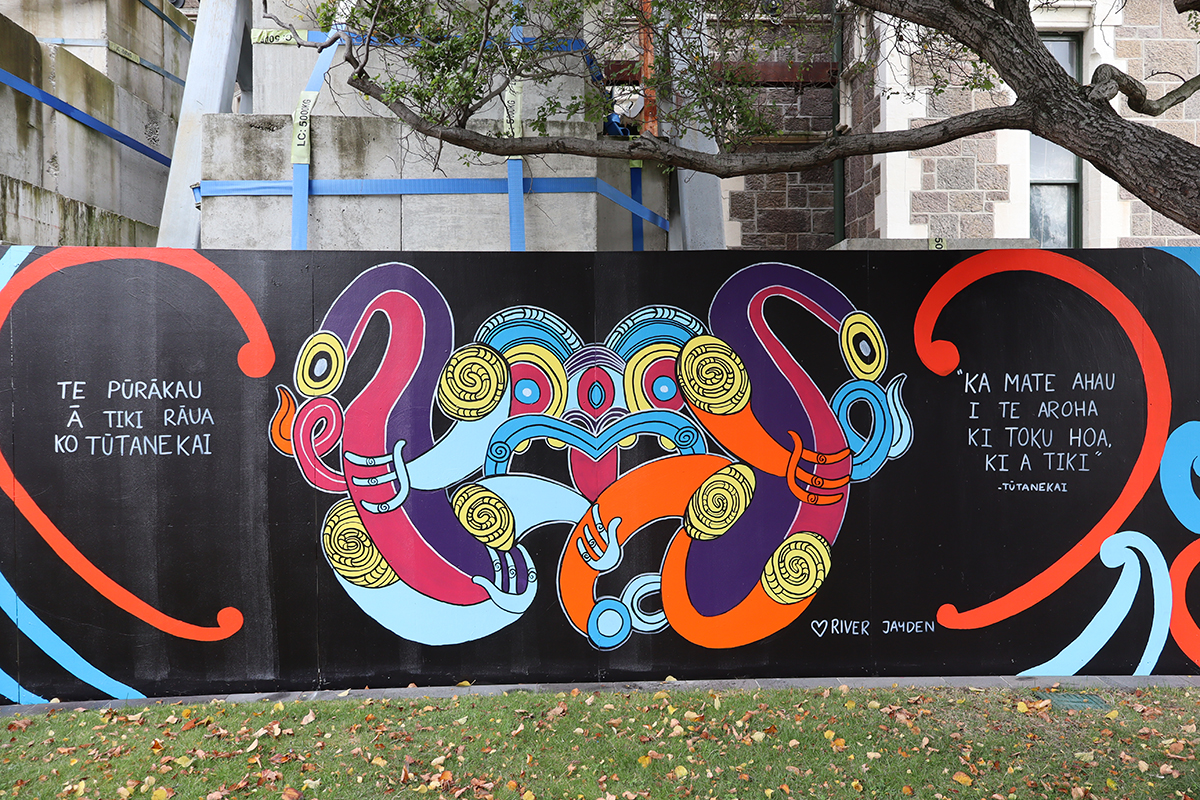Te Pūrākau o Tiki Rāua ko Tūtānekai
By River Jayden, with rangatahi.
Title of artwork: Te Pūrākau o Tiki Rāua ko Tūtānekai
Artist: River Jayden (Ngāti Tahu – Ngāti Whaoa, Ngāti Tuwharetoa), with rangatahi
Date: May 2025
Category of work: Mural
Media: Acrylic on plywood
Where you can see it: on Worcester Boulevard
Thanks to: NZ Charitable Foundation, proudly managed by Perpetual Guardian, for funding this activity.
This mural depicts the intimate relationship between Tiki and Tūtānekai, a symbol of traditional acceptance of same-sex relationships in te ao Māori and a tribute to love in all its forms. The kowhaiwhai pattern on either side of the main element represents moana (sea) and whenua (land), symbolising interconnection of whanau.
The mural incorporates a tribute to the renowned artist and writer Robyn Kahukiwa, who passed away in April 2025 (during the time this work was being made).
The following explanation of the work was written by the artist River Jayden. She wanted the work to create a sense of comfort, warmth and welcome to whānau who might relax under the shade of the tree in front. Te Matatiki Toi Ora The Arts Centre thanks River and the rangatahi Samantha, Fesny and Phoenix for their mahi toi.
“The story of Tiki and Tūtānekai stands as a powerful symbol of takatāpui identity, honouring same-sex relationships within te ao Māori. Before colonisation and the arrival of Anglican missionaries, Māori viewed gender and sexuality with fluidity, unrestricted by rigid norms. Same-sex relationships were commonly embraced, as reflected in our moteatea, carvings, and oral traditions.
One of the most renowned Māori love stories is that of Hinemoa and Tūtānekai. Hinemoa, a woman of great beauty and high-ranking descent, fell in love with Tūtānekai, a man of lower status. Their love was forbidden by Hinemoa’s whānau, yet each night, Tūtānekai played his kōauau (flute) from Mokoia Island, sending his melody across Lake Rotorua for Hinemoa to hear. One fateful night, driven by love, she swam through the cold waters with the aid of gourds to reach him. At last, they were united, and over time, her family accepted their love.
Yet, before his love for Hinemoa, Tūtānekai shared a deep and intimate bond with Tiki, a relationship often understood as one of same-sex love. Tūtānekai himself expressed this affection, saying, “Ka aroha ahau i te aroha ki tōku hoa, ki a Tiki”—“I am stricken with love for my friend, for Tiki.” These words, which I have incorporated into my mural, serve as a clear testament to the deep love between them and highlight the historical acceptance of same-sex relationships within Māori culture.
Though Tūtānekai loved Hinemoa, his heart also belonged to Tiki, whom he called ‘taku hoa takatāpui’—my intimate same-sex friend. As documented by Grey (1971:113), Tūtānekai spoke of Tiki with great reverence, affirming the depth of their connection.
In my artwork, I have chosen to represent Tiki and Tūtānekai as a taonga, suspended within the piece. This serves to honour takatāpui as treasures of our culture, deserving of aroha and mana.
By elevating their narrative, the mural becomes a taonga for same-sex relationships, a lasting tribute to love in all its forms.”
